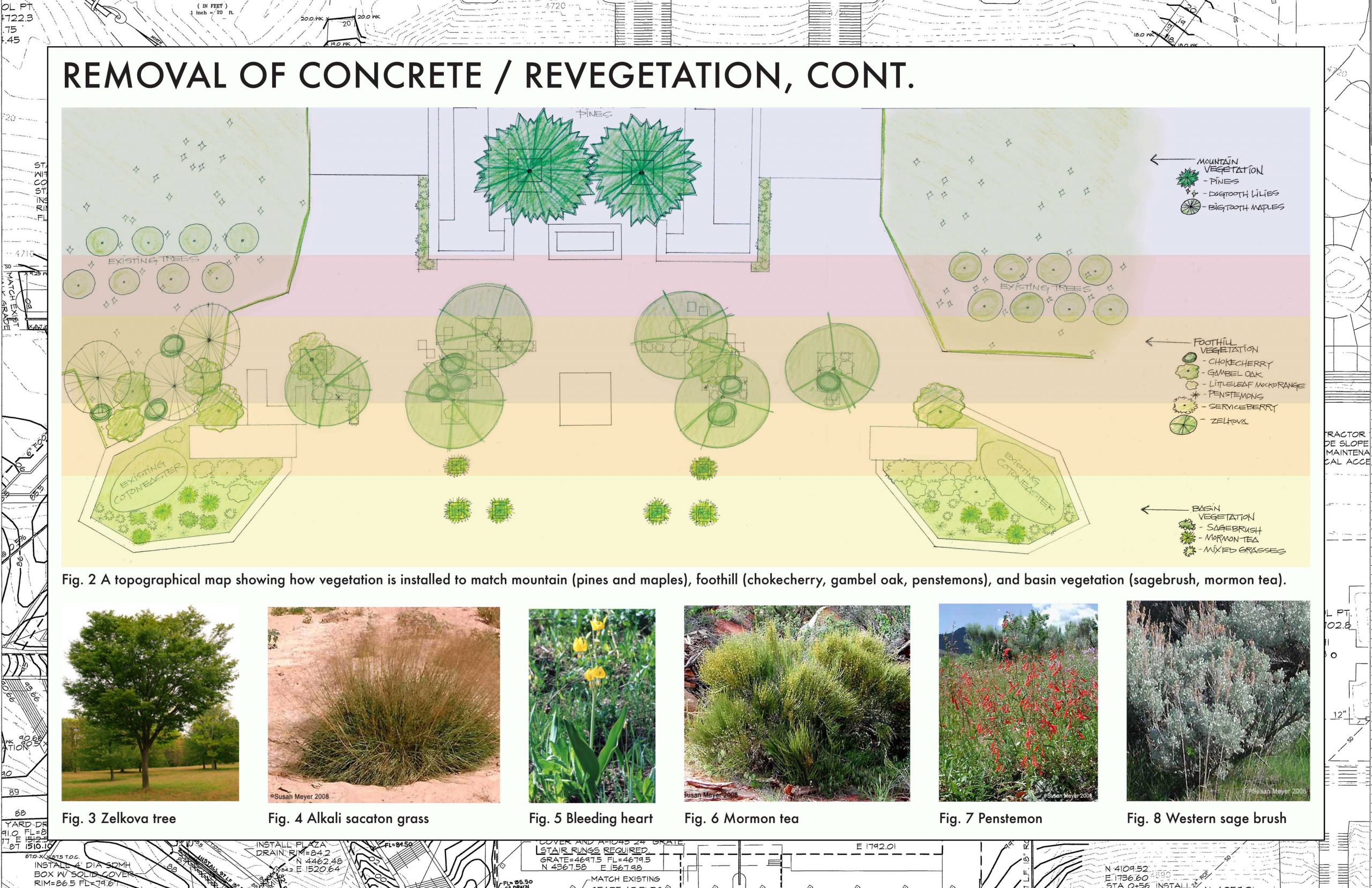
April 18, 2011 – On Friday a University of Utah staff member will get to see the realization of a vision she and her classmates had when she was the senior class president on campus. At the time, Erica Andersen and the 2010 senior class gifted a “re-imagined” plaza outside the east entrance of the J. Willard Marriott Library. At 12:45 p.m. on April 22, a ground-breaking ceremony for the project will be held at Library Plaza. David Chapman, distinguished professor of geology and geophysics, will provide remarks.
Andersen, now assistant to the director of the U’s Sustainability Research Center, says the “Re-Imagine the Plaza” project is designed to transform a “dead space on campus into a thriving, brilliant, innovative and encouraging space for all.”
The ceremony will take place amidst the university’s Earth Fest, a day of environmentally friendly activities to celebrate Earth Day. Immediately following the ceremony, participants in the Earth Fest bicycle parade – led by Mayor Ralph Becker – will tour campus. For more Earth Fest events, visit http://tiny.utah.edu/earthfest.
Perfect for an Earth Day groundbreaking, the project calls for removal of approximately 600 square feet of concrete that will be replaced by beds containing native Utah plant species. The new design is expected to increase the amount of storm water that seeps into the area’s soil, which improves water quality, according to Steve Storheim, advisor to the students who created the new plaza design. It is estimated that the redesigned plaza will provide an annual increase of 114 gallons of rain water to the surrounding soil.
Project designers chose to plant native Utah plants because they require less water and maintenance. Drip irrigation will be installed to irrigate the beds. The project’s planning and coordination has been handled through the departments of facilities management and city and metropolitan planning.
The environment may not be the only beneficiary of this project. A key goal of designers is to provide students with a learning experience. “The transformation process of the Marriott Library plaza will serve our campus as a living laboratory, providing collaborative research opportunities for undergraduates and graduate students alike,” says Andersen. “These opportunities may generate entrepreneurial ventures, innovative solutions to unique community obstacles, and exceptional learning opportunities in any and all disciplines.”
The project also will provide an area for observation and measurement of social and environmental conditions. Before and after project completion, Storheim says that students will be able to track its total resource conservation and provide detailed environmental and economic impacts on storm water and heat management practices on campus.
Stephen Goldsmith, university professor for campus sustainability and professor of city and metropolitan planning, speaks to the project’s importance: “The transformation of library plaza creates a social space that allows students from across disciplines to meet and discuss ideas. Innovation occurs in densely populated places, and with this space being such an important campus crossroads the opportunities for people to meet and discuss ideas holds interesting possibilities”. The successful design project is a result of interdisciplinary student collaboration, and student fees have funded the majority of the project.
